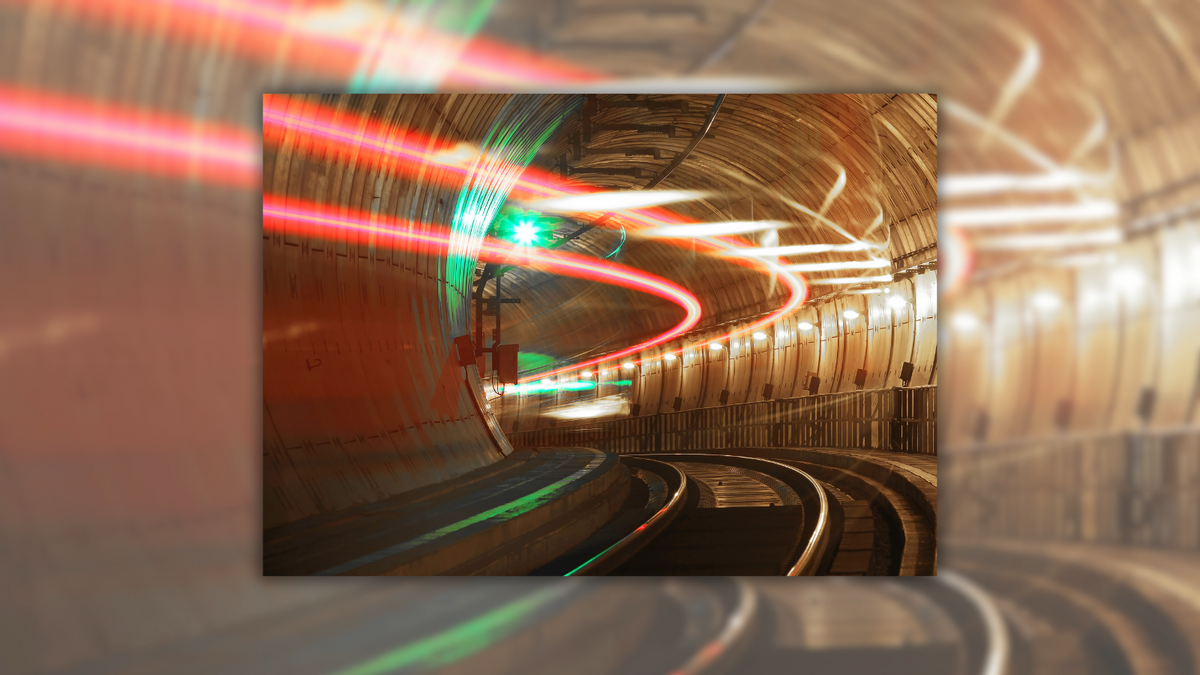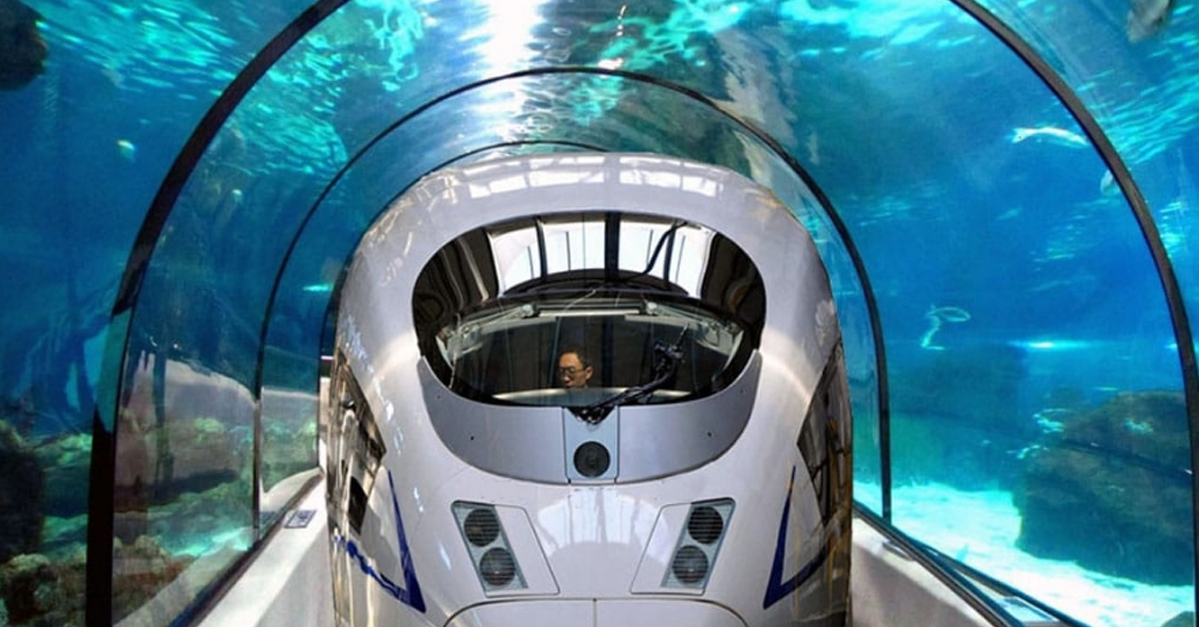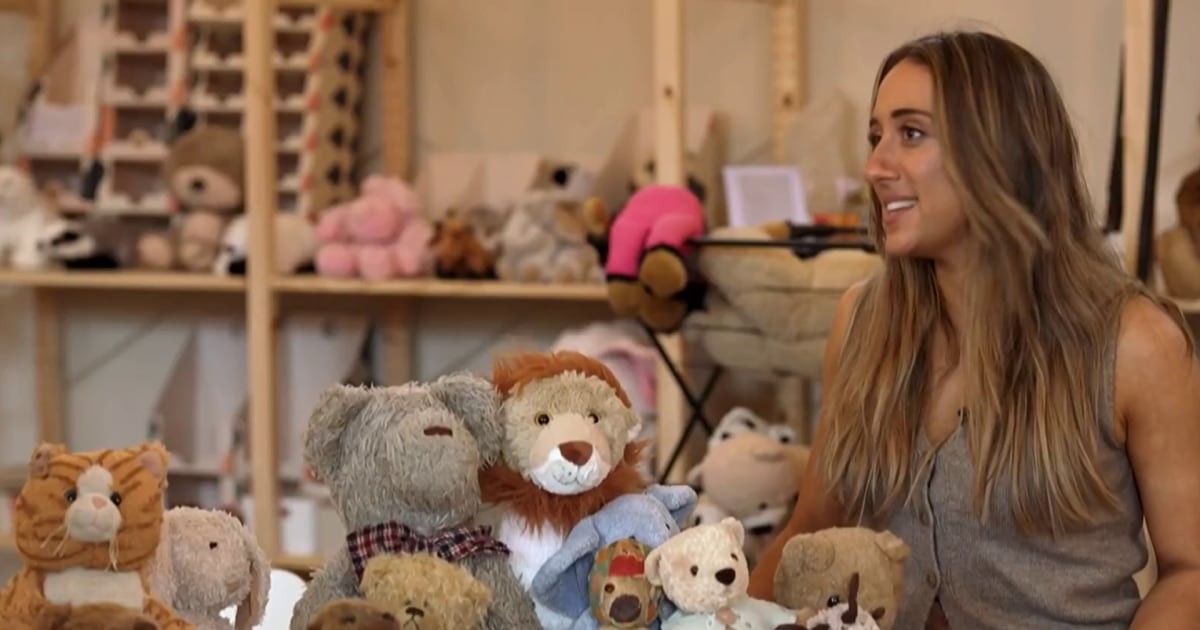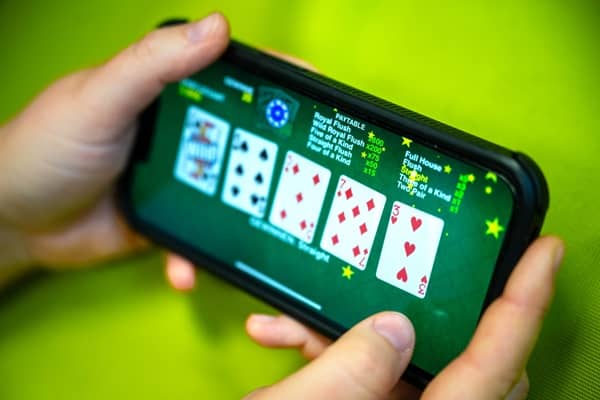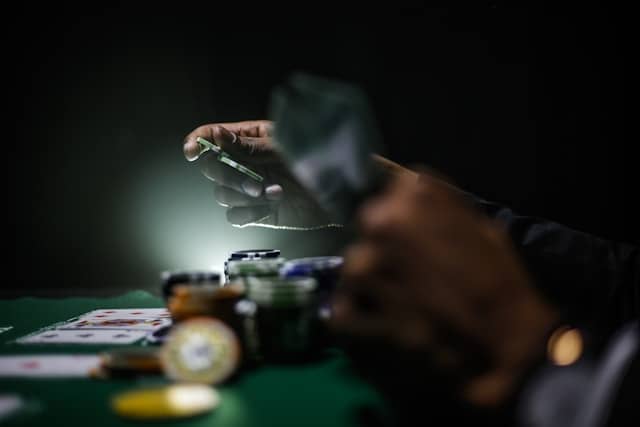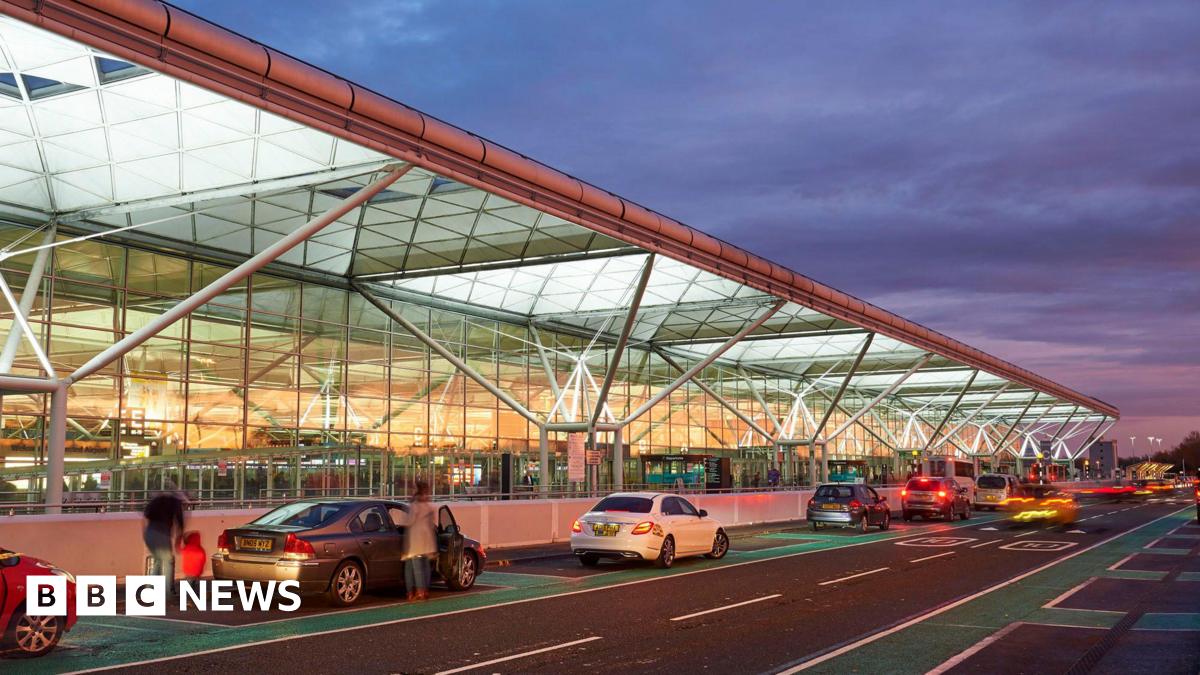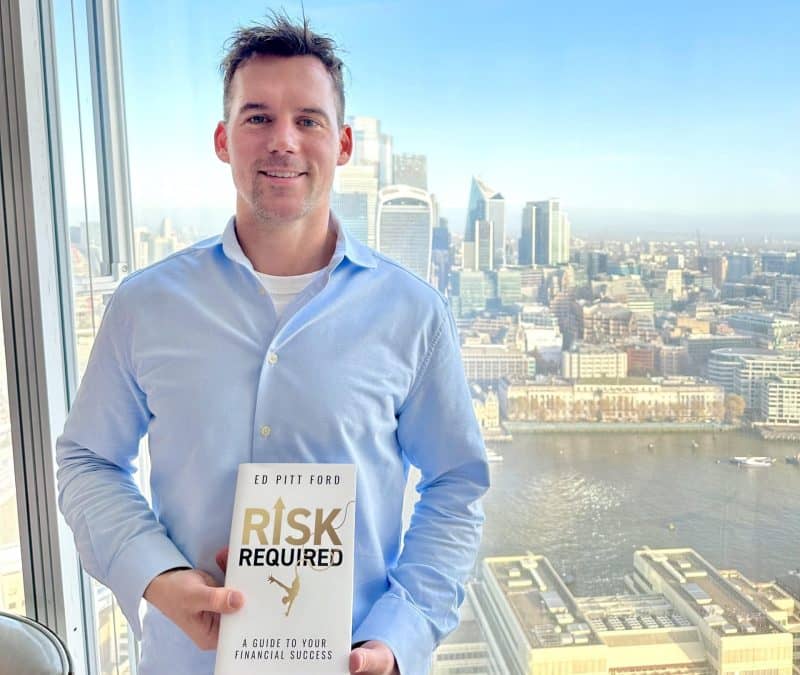Football
Shortlist announced for Docklands slavery sculpture memorial
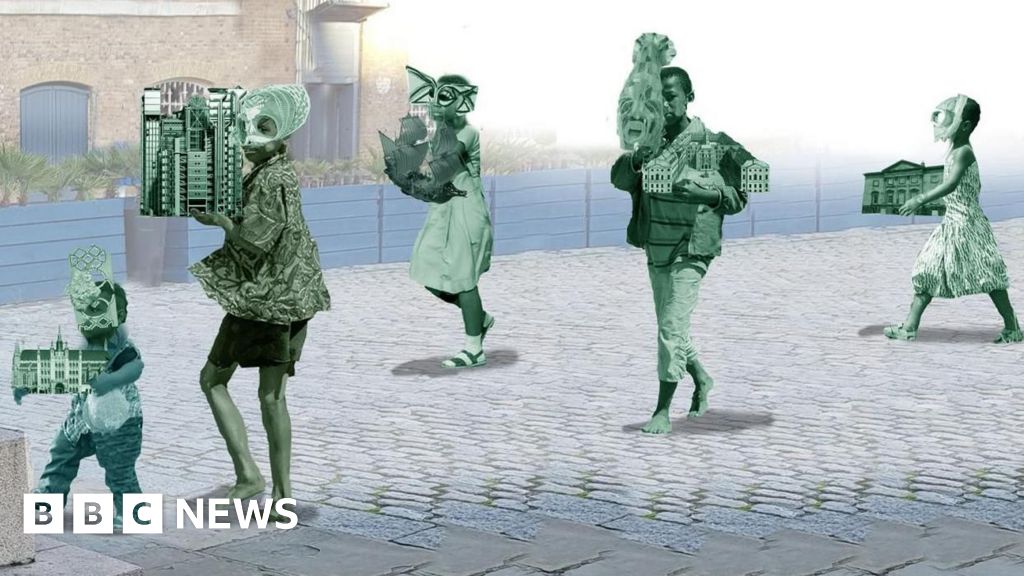
By Bethan Bell, BBC London
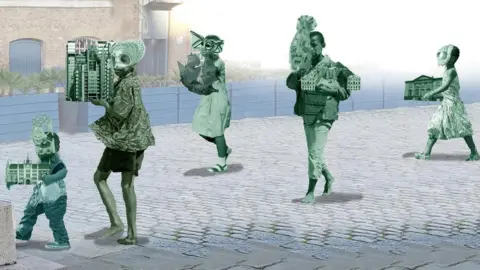 Hew Locke
Hew LockeA giant cowrie shell and an 11ft (3.4m) African queen are among six artworks shortlisted to become a memorial to the victims of the transatlantic slave trade.
The piece will be located in West India Quay in London Docklands, an area linked with the trade.
Mayor of London Sadiq Khan, who has earmarked £500,000 for the artwork, said it was important public spaces reflected the heritage of the capital.
The memorial would help Londoners “better remember the victims of slavery in the slave trade”.
There are already monuments commemorating abolition, and many that reflect the wealth and power of the traders – but little to honour the millions of African people who were enslaved.
The plan has been developed by the mayor’s commission for diversity in the public realm, which is working with communities to decide how the memorial will look.
Members of the public can vote for their favourite to become the final piece.
The six finalists
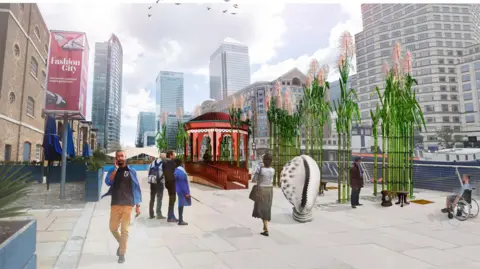 Alberta Whittle
Alberta WhittleEchoes from beneath the deep and in between the canes
Alberta Whittle
“I am Barbadian but my family made their home in London during the 1960s. Family conversations nurtured a commitment to reimagine freedom in the wake of enslavement.
“In the Americas, the Caribbean and the African continent, proof of transatlantic slavery resides in plantations, barracoons and fields of sugarcane, tobacco, cocoa and coffee.
“In Britain the evidence has been disguised.”
Echoes from beneath the deep and in between the canes includes a Caribbean-style pavilion alongside a sugarcane field and cowrie shells, which are synonymous with the trade of enslaved people.
 Grada Kilomba
Grada Kilomba Archaeology of Contemplation
Grada Kilomba
“The image of a boat is a metaphor of remembrance, remembering those who were transported as cargo by the British and other nations.
“The Middle Passage was the brutal voyage of millions of enslaved Africans across the Atlantic into forced labour in the Caribbean and Americas.
“In horrendous conditions, people were transported as cargo by the British and other European nations.
“This sculpture carefully reveals the bottom of these boats, making visible the invisible.
“Just as a continent with millions of people cannot be discovered, neither can one of the most tragic periods of humanity be erased.”
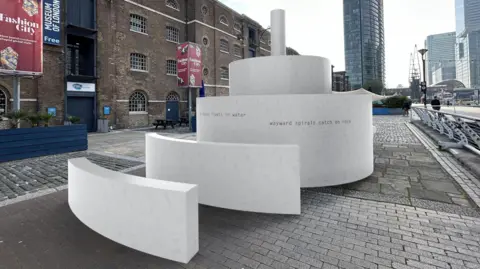 Helen Cammock
Helen CammockRipple
Helen Cammock
“I think of water and its role in the movement of bodies. Ripples carry water, and air.
“They are a way to understand past action and decision effects, as they move through time.
“A ripple holds both absence and presence, and is not a ripple without both.”
Ripple is a large scale, circular stone structure with six engraved texts in West African wood.
It asks us to think about how histories resonate, reverberate and replicate – just like a ripple in water.
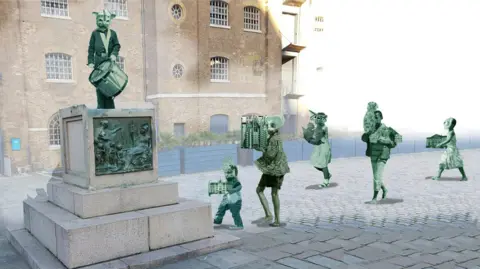 Hew Locke
Hew LockeMemorial for the victims of the transatlantic slave trade
Hew Locke
“It’s been estimated that up to a quarter of all enslaved people transported across the Atlantic were children.
“Children born into slavery could be traded away from their own parents and, as they grew, their own children would then be enslaved and traded away in turn.
“As well as the past, this memorial also needs to be about the present and the future – and children signify the future.
“I want to engender a sense of pride in our survival.
“I want the work to be delicate but hard hitting.”
The work consists of bronze sculptures of boys and girls carrying buildings that were built in London from money earned by the trade in enslaved people.
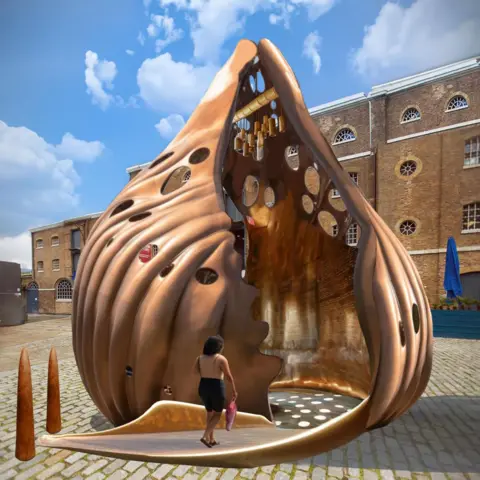 Khaleb Brooks
Khaleb BrooksThe Wake
Khaleb Brooks
“The intention behind this work is not just to remember individual stories and hopes, but also counteract the history of forgetting embedded in colonialism.
“In the Museum of London Docklands, there’s a list of ships, captains, owners and destinations that participated in the slave trade, but no names of enslaved individuals.
“Victims are often excluded from archives.”
The Wake uses a large scale cowrie shell to represent the perseverance, prosperity and beauty rooted in African and African diasporic heritage.
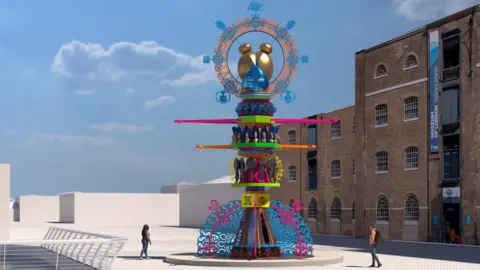 Zak Ové
Zak OvéNana Buluku
Zak Ové
“I have created a representation of Nana Buluku, an African Queen, an Afro-futurist deity and a celebration of the history of African culture.
“She is positive and colourful. Her embodiment is mythic yet futuristic, unashamedly black and beautiful.
“She is Black Pride.
“She is believed to be the mother of all deceased people and accompanies them during their journey to the land of the dead, preparing their souls to be born again.”
Built in steel with cast resin details, Nana Buluku is internally lit, adorned with a filigree halo inscribed with protective symbols.
Commenting on the future memorial, Douglas Gilmore from the Museum of London Docklands said: “Our museum on West India Quay occupies a former warehouse built in the 1800s to store produce grown and harvested by enslaved Africans in the West Indies. An example of how the very fabric of London has been shaped by this history.
“Now home to one of only a few permanent galleries in the UK devoted to this subject, and the only one in a European capital city, I can think of no better place to have the memorial than outside the museum.”


